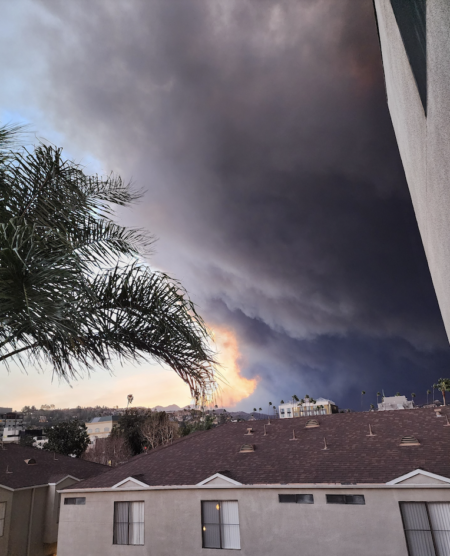Almost 10 million residents of L.A. County are currently experiencing the aftermath of the worst urban disaster in the country’s history.
Tens of thousands of people are displaced across the county as more than 12,000 homes and structures have been destroyed or damaged. But for the residents who are still living in their homes, some of the dangers still lurk.
This week, I attended a webinar organized by the Coalition for Clean Air, where several air quality and health experts spoke about the “disaster after the disaster,” that is, the big cleanup that the city requires post a major burn.
These kinds of cleanup operations take a long time, especially for a disaster of this magnitude, warned the speakers, which means less-than-safe conditions could persist in the city for a while, maybe even a few years.
As of Jan. 17 2025, the fires have burned over 40,000 acres, or 62 square miles, of land in L.A. County. That is equivalent to an area almost three times the size of Manhattan! Think about all the burnt materials: all kinds of plastics, metal, lithium-ion batteries… the remnants of all those materials now make up the ash and soot in the burn sites as well as parts of our air and water.
I don’t write any of this to scare you. As any resident of a major metropolitan city knows, some of these chemicals are already a part of the air we breathe and the water we drink.
But while officials undertake the major task of cleaning up, here are some tips from the webinar I’d like to share with you so you can keep yourself and your loved ones safer during this difficult time:
- If you can, keep wearing an N95/KN95 mask even if the air quality index is green. The air quality index usually measures the amount of particulate matter and ozone in the air but does not measure several other noxious gasses and chemicals. You can check air quality conditions in your area through EPA’s AirNow website and Fire and Smoke Map.
- Health officials recommend installing air purifiers in your home or replacing the air filters in your HVAC system if you haven’t done so. Make sure to check in with your office/school whether they are maintaining their HVAC systems, especially if the location is close to a burn site.
- If you live close to a burn site, health officials suggest outsourcing water for all your needs, including for baths and cooking. Beware that the water coming through your pipes might have been contaminated by harmful chemicals, sediment and even germs. If you don’t live close to a burn site, health officials recommend at least filtering your drinking water.
- If you lost your home in the fires or live very close to a burn site, make sure to avoid contact with any ash, soot or other burnt materials, including breathing in wildfire smoke. It can be tempting to return to a burn site, but burnt materials can release harmful chemicals that may cause asthma, cardiovascular diseases, cancers, skin and eye irritations, and can also damage vital organs such as the lungs, heart, brain and liver. If you do visit a burn site, please make sure to cover yourself with proper protective clothing and equipment. UCLA’s Labor Occupational Safety and Health Program provides several factsheets on PPE and covering up safely.
- If you or any of your loved ones fall into any groups who may be sensitive to unhealthy conditions (e.g. young children, elders and those who are pregnant), please make sure to take extra precautions! This should especially be a priority for schools and daycare centers that are within a mile of any burn sites. If your child’s school or daycare is close to a burn site, you should remain informed about any potential risks to your child’s health.
- Some of the greatest health risks during post-disaster times are grief, anguish, fear and other negative emotions that can debilitate one’s health and immunity. If you or any of your loved ones are dealing with post-traumatic stress, anxiety, depression or any other mental health concerns because of the fires, here are some resources from the California Department of Public Health that may be useful.
Lastly, there are no clear boundaries for which areas and neighborhoods can be considered “safe.” This is because contamination largely depends on which chemicals were burned at a particular site, and in which direction they were transferred through water pipes or winds. There is no conclusive way to tell whether or not your neighborhood is safe without proper testing.
Therefore, depending on your perceived level of exposure, you can take the aforementioned precautions as you see fit.
As we try to recover from this disaster, please stay safe and keep sharing any resources with those who may need them. You can check out the Coalition for Clean Air webinar here.
Rhysea Agrawal is a multimedia journalist and the Center for Climate Journalism and Communication’s Engagement Coordinator.
